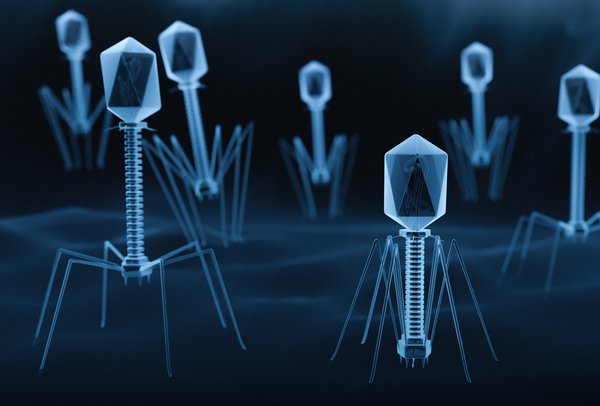DNA sequencing technology has led to tremendous advances in biology since the 1990s. Genetics is inextricably linked to the spectacular evolution in molecular and cellular biology that has completely transformed the field and the way biologists conduct research. Our researchers are immersed in this field devoted to the study of the genetic material of organisms, including their genomes, cells, and the proteins they express. Studying the diversity of living organisms through functional genomics involves managing, analyzing, and interpreting huge amounts of data and requires the participation of bioinformaticians.
Explore research on biological systems
The faces of biological systems research
Systems biology
Systems biology involves integrating various layers of information to understand how a biological system works. To do so, scientists study the relationships and interactions between different parts of a system (cells, genes, proteins) in order to determine how the system works as a whole. High-throughput screening makes it possible to study an organism’s genes and proteins by quantifying changes to its genome, A transcriptome is the set of RNAs that results from the transcription of a genome., A proteome is the set of proteins that can be expressed by a cell or group of cells., and A metabolome is the complete set of all small-molecule metabolites in an organism. in the wake of any type of disturbance.
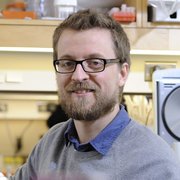
Christian Landry, professeur titulaire, Department of Biochemistry, Microbiology, and Bio-informatics
Canada Research Chair in Evolutionary Cell Biology
Professor Landry studies the evolutionary processes that shape living organisms. He and his team are examining cellular systems to decipher the principles governing how information contained in DNA is translated into complex molecular and cellular structures. They are also investigating the effects of individual genes on protein regulation, structure, assembly, and interaction to shed light on the mechanisms that cause human disease.
Biology of viruses and bacteriophages
The study of viruses that infect bacteria—bacteriophages—led to the birth of molecular biology and the identification of the molecular mechanisms that govern cells. Virus biology has been instrumental in developing gene therapies used to treat some genetic diseases. Scientists are also turning to viruses as a tool to fight bacterial infections. Their research has also contributed to our understanding of the origins of life and the emergence of biodiversity on the planet.
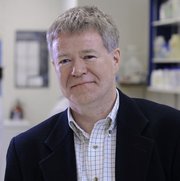
Sylvain Moineau, professeur titulaire, Department of Biochemistry, Microbiology, and Bio-informatics
Canada Research Chair in Bacteriophages and curator of the Félix d'Hérelle phage collection
Professor Moineau is internationally renowned for his role on the international team that discovered CRISPR-Cas9 genetic editing technology. This technology is first and foremost a defence mechanism used by bacteria against bacteriophages—viruses that infect and destroy them. Professor Moineau is advancing our understanding of the biology of these viruses and their interactions with bacteria by combing data from genomics, transcriptomics, proteomics, and structural biology. He hopes to assess the potential of phages as an alternative to antibiotics and find new ways to eliminate bacteriophages in dairy fermentation.
Bioinformatics
Bioinformatics is a field at the intersection of math, computer science, statistics, and biology. It has developed as a result of technological advances that provide access to growing quantities of data on the environment, genomes, and gene variations. Bioinformatics can analyze data derived from genetic information contained in DNA sequences and the proteins they encode. It is also used to analyze and model interactions between genes, proteins, cells, and organisms using data provided by high-throughput analytical technologies such as proteomics and transcriptomics.

Simon Hardy, professeur agrégé, Department of Biochemistry, Microbiology, and Bio-informatics, Department of Computer Science and Software Engineering
Researcher in cellular and molecular neuroscience at the CERVO Brain Research Centre
Professor Hardy and his team build mathematical and computational models (including theoretical neural models) using experimental data that are then employed to analyze the complex behaviour and dynamics of biological systems. His research group also uses elements of control theory to explain cellular regulation mechanisms such as cell signaling. The models they develop are used to predict how a given system will respond in various situations, how it can be modified, and the interventions that can be used to restore it.
Comparative and evolutionary genomics
It is possible to characterize and understand the effects of natural selection on the organization and evolution of genomes by studying the structure and function of species’ genomes. This field of study has benefitted significantly from the development of increasingly powerful computers. Comparative genomics makes it possible to identify genes and their non-coding regulatory sequences. Recent work on DNA sequencing has shown that all living species share many common features and that genetic distance is less significant than gene combination and hierarchy in the diversity of living organisms.
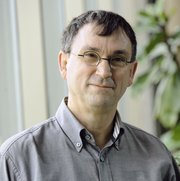
Claude Lemieux, professeur titulaire, Department of Biochemistry, Microbiology, and Bio-informatics
Member of Institute of Integrative Biology and Systems (IBIS)
Professor Lemieux specializes in comparative genomics, phylogenomics, and the molecular evolution of plants. He and his research group are working to identify and analyze the complete genome sequence for green algae organelles, a monumental task given that the genome contains 20,000 to 600,000 base pairs. The ultimate goal is to understand how green algae evolved and spawned terrestrial plants.
I love going to work every day. Sylvain Moineau’s team is like a big family. No one is afraid to say ‘this isn’t working’ or ‘I don’t know how to do that.’ The team has a lot to do with that.
Marie-Laurence Lemay, PhD graduate in microbiology supervised by Sylvain Moineau
Graduate studies
Make the leap to graduate studies
Explore our fields of study
Functional genomics
Functional genomics is the study of the function and expression of sequenced genes through characterization of the A transcriptome is the set of all RNA molecules resulting from genome transcription. and A proteome is the entire set of proteins that can be expressed by a cell or group of cells.. This work provides a better understanding of the biological function of a cell’s genes and the impact of a species’ genome on its biological functions.
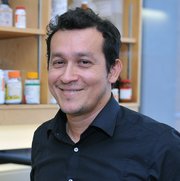
Juan Carlos Villarreal A., professeur agrégé, Department of Biology
Member of the Institute of Integrative Biology and Systems (IBIS) and the Forestry Studies Centre (CEF)
Professor Villarreal Aguilar studies the evolution of plants and lichens. He uses electron microscopy, DNA sequencing, and genomic data to explore variations between plants. One of his research projects focuses on genetic and chemical diversity among Gymnosperms are “naked seed” plants—plants whose seeds are unenclosed. in Panama. He also uses functional genomics to analyze symbioses between two plant families, bryophytes and cycadales, and cyanobacteria.
Host-parasite interaction
Parasites live off their hosts, putting the host’s health and survival at risk. This triggers a reaction from the host, which tries to defend itself. Researchers study host-parasite interaction to understand the antagonistic relationships and the evolution of this arms race. In the end, the most resistant hosts are selected based on their ability to overcome parasites. Understanding these processes is significant for evolutionary ecology, agriculture, and species conservation.

Nadia Aubin-Horth, professeure titulaire, Department of Biology
Member of Institute of integrative biology and systems
Nadia Aubin-Horth is a specialist in Ecological genomics and integrative biology of behavior. Her research group studies the interactions between a parasite and its host: the threespine stickleback and a flatworm. Once parasitized, the fish no longer responds to predator attacks. As this parasite reproduces only in the intestine of a predatory bird, Dr. Aubin-Horth's laboratory seeks to answer the following questions: Does the parasite manipulate the behavior of its fish host to facilitate its transmission to its bird host? If yes, how? To study the molecular interactions between the fish and its parasite, Dr. Aubin-Horth's group combines information on the behavior of fish with what changes at the molecular level in the fish brain, in the parasite, and in the molecules involved in the interaction between the two species.
Protein structure and function
The study of proteins that result from gene transcription is crucial for understanding organism function and dysfunction at the molecular level. Detailed knowledge of proteins paves the way for the discovery of new therapeutic agents, biodegradable materials, bioreactors for detoxification, and greener industrial biocatalysts.
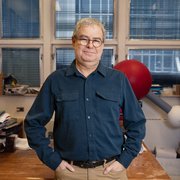
Normand Voyer, professeur titulaire, Department of Chemistry
Director, Quebec Network for Research on Protein Function, Engineering, and Applications (PROTEO)
Professor Voyer is working on several projects to develop therapeutic agents. One of these involves synthesizing a basic molecular system capable of reproducing recognition of small Chirality is a key geometric molecular property related to symmetry. Chiral molecules are non-superposable on their mirror images. and very large proteins, a process vital to the survival and reproduction of living organisms. This molecular system, which attaches to the surface of certain enzymes and proteins, acts as a molecular receptor capable of recognizing large surfaces rather than small molecules. It could be used to find new ways to purify therapeutic proteins and stabilize active enzyme structures used in industry.
My work is a bit like astrophysics, which tries to understand how the universe is organized. Our job is to do the same thing for things we can’t see, not because they’re too far away, but because they’re too small!
Christian Landry, professor, Department of Biology and Department of Biochemistry, Microbiology, and Bioinformatics
